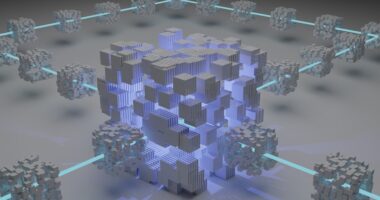Creating a non-fungible token (NFT) involves several costs that artists and creators must consider. These include:
1. Initial creation costs: Expenses for software, equipment, and time invested in producing the digital artwork or content.
2. Minting costs: Fees associated with registering the digital asset on a blockchain and creating a unique token. This includes gas fees, which vary based on network congestion and the chosen blockchain platform.
3. Marketplace fees: Costs for listing and selling NFTs on various platforms, which can differ significantly between marketplaces. 4.
Marketing expenses: Costs related to promoting NFTs to potential buyers. 5. Environmental impact: The energy consumption associated with blockchain transactions.
6. Labor costs: Time and effort invested in digital art creation and NFT management. Creators should carefully evaluate these expenses and incorporate them into their pricing strategy when creating and selling NFTs.
Understanding the full range of costs allows for more informed decision-making regarding the viability of NFTs as a means of monetizing creative work.
Key Takeaways
- Creating an NFT involves costs such as minting fees, gas fees, and platform fees, which can add up quickly.
- Financial investment in crypto jobs for NFT creation includes hiring developers, artists, and marketing professionals, which can be substantial.
- The true cost of Bitcoin in NFT production involves calculating the energy consumption and environmental impact of mining the cryptocurrency.
- NFT creation has an environmental impact due to the energy-intensive process of minting and trading digital assets.
- Labor costs for digital art creation in the NFT space can vary depending on the complexity and expertise required for the project.
- NFT market fees, including transaction fees and platform commissions, can significantly impact the overall cost of NFT creation and trading.
- The future of NFT creation may involve evolving technologies and regulations that could impact the potential costs and sustainability of the industry.
The Financial Investment in Crypto Jobs for NFT Creation
Investing in Education and Training
Individuals looking to pursue a career in crypto jobs for NFT creation must be prepared to invest significantly in their education and training. This may involve obtaining certifications in blockchain technology, learning to code smart contracts, or gaining expertise in digital art creation. Staying up-to-date with the latest developments in the crypto space also requires ongoing investments in courses, workshops, and networking events.
Navigating Market Volatility
Professionals in crypto jobs for NFT creation must be prepared for the potential volatility of the cryptocurrency market. The value of cryptocurrencies can fluctuate dramatically, impacting the financial stability of individuals working in this space. It’s crucial for professionals to carefully manage their investments and stay informed about market trends to mitigate financial risks.
Staying Ahead in the Crypto Space
To succeed in crypto jobs for NFT creation, individuals must be committed to ongoing learning and professional development. This includes staying current with the latest advancements in blockchain technology, smart contracts, and digital art creation, as well as building a network of contacts within the crypto community. By doing so, professionals can stay ahead of the curve and capitalize on the opportunities presented by the growing NFT market.
Calculating the True Cost of Bitcoin (BTC) in NFT Production

Bitcoin (BTC) is often used as a form of payment for minting and purchasing NFTs, but it’s important for creators to understand the true cost of using Bitcoin in NFT production. One of the primary considerations is the transaction fees associated with Bitcoin, which can vary depending on network congestion and market demand. These fees can add up quickly, especially for creators who are minting and selling multiple NFTs.
Additionally, creators should consider the potential impact of Bitcoin’s price volatility on their NFT production costs. The value of Bitcoin can fluctuate significantly over short periods of time, which can impact the overall cost of minting and selling NFTs. Creators may need to factor in potential losses or gains when pricing their NFTs in Bitcoin, and they should be prepared to adapt to market fluctuations in order to protect their financial investments.
Furthermore, creators should also consider the environmental impact of using Bitcoin in NFT production. Bitcoin mining has been criticized for its high energy consumption and carbon footprint, which can contribute to the overall environmental cost of creating and trading NFTs. By carefully considering these factors, creators can make more informed decisions about whether or not to use Bitcoin in their NFT production process.
The Environmental Impact of NFT Creation and Its Hidden Costs
The environmental impact of NFT creation has become a topic of significant concern in recent years. The process of minting and trading NFTs relies on blockchain technology, which requires a significant amount of computational power and energy consumption. This has led to criticism of NFTs as being environmentally unsustainable, particularly due to the high energy consumption of cryptocurrencies like Ethereum, which is commonly used for minting NFTs.
In addition to the direct environmental impact of blockchain technology, there are also hidden costs associated with the carbon footprint of NFT creation. For example, the production and disposal of electronic devices used for creating digital art can contribute to e-waste, which has its own environmental consequences. Furthermore, the transportation and storage of digital assets on centralized servers also contribute to the overall environmental impact of NFT creation.
It’s important for creators and consumers alike to consider these hidden environmental costs when engaging with NFTs. By understanding the full scope of the environmental impact of NFT creation, individuals can make more informed decisions about how to minimize their carbon footprint and support sustainable practices within the industry.
NFT Jobs and the Labor Costs of Digital Art Creation
The labor costs of digital art creation are an important consideration for individuals pursuing NFT jobs. Creating high-quality digital artwork requires time, skill, and creativity, all of which have inherent value. Artists and creators should be compensated fairly for their labor, especially when their work is being tokenized and sold as an NFT.
In addition to the direct labor costs associated with creating digital art, there are also hidden labor costs that should be taken into account. For example, artists may need to invest time and resources into marketing and promoting their NFTs in order to attract buyers. Additionally, maintaining an online presence and engaging with potential collectors can also require a significant investment of time and effort.
Furthermore, individuals working in NFT jobs should also consider the potential impact of competition on labor costs. As more artists and creators enter the NFT space, there may be downward pressure on prices as buyers are presented with a wider range of options. This can make it challenging for artists to command fair prices for their labor, especially if they are just starting out in the industry.
NFT Market Fees and Their Impact on the Overall Cost

Listing and Selling Fees
Many NFT marketplaces charge fees for listing and selling digital assets. These fees can eat into the profits of NFT sales, making it essential for creators to factor them into their pricing strategy.
Additional Market-Related Costs
In addition to listing and selling fees, creators should also consider other potential market-related costs. These include platform royalties and transaction fees. Some NFT marketplaces charge royalties on secondary sales of digital assets, which means that creators may continue to incur costs even after their initial sale. Transaction fees associated with blockchain networks can also add up quickly, especially during periods of high network congestion.
Factoring in Market Fees
Creators should carefully consider the overall impact of market fees on their pricing strategy when creating and selling NFTs. By factoring in these costs from the outset, creators can ensure that they are able to cover their expenses while still making a profit from their NFT sales.
The Future of NFT Creation and Its Potential Costs
As the popularity of NFTs continues to grow, it’s important to consider the potential future costs associated with NFT creation. One key consideration is the ongoing evolution of blockchain technology and its impact on transaction fees and energy consumption. As blockchain networks continue to develop and improve, it’s possible that some of the current costs associated with creating NFTs may decrease over time.
Additionally, as more individuals enter the NFT space, there may be increased competition for buyers, which could impact pricing strategies and labor costs for creators. It’s important for individuals working in NFT jobs to stay informed about market trends and developments in order to adapt to potential changes in the industry. Furthermore, there is also potential for regulatory changes that could impact the costs of creating and selling NFTs.
As governments around the world grapple with how to regulate cryptocurrencies and digital assets, there may be new compliance requirements or taxes that could affect the overall cost of engaging with NFTs. In conclusion, understanding the full scope of costs associated with creating an NFT is essential for artists, creators, and professionals working in crypto jobs. By carefully considering direct costs, hidden costs, labor costs, market fees, and potential future costs, individuals can make more informed decisions about how to navigate the complex world of non-fungible tokens.
As the industry continues to evolve, it’s important for individuals to stay informed about market trends and developments in order to adapt to potential changes in the industry.
FAQs
What is an NFT?
An NFT, or non-fungible token, is a digital asset that represents ownership or proof of authenticity of a unique item or piece of content, such as digital art, videos, music, or other digital files.
How much does it cost to make an NFT?
The cost of making an NFT can vary widely depending on factors such as the platform used, the complexity of the digital art, and any associated fees. Generally, the cost includes gas fees for the blockchain transaction, platform fees, and potentially costs for creating or minting the digital art.
What are the main costs associated with making an NFT?
The main costs associated with making an NFT include gas fees for the blockchain transaction, platform fees charged by the NFT marketplace, and potentially costs for creating or minting the digital art itself.
What are gas fees in the context of NFTs?
Gas fees are the transaction fees required to successfully process and complete a transaction on a blockchain network, such as Ethereum. These fees can fluctuate based on network activity and the complexity of the transaction.
Are there any hidden costs associated with making an NFT?
In addition to the upfront costs of creating and minting an NFT, there may be hidden costs such as storage fees for hosting the digital art file, ongoing platform fees, and potential legal or copyright-related expenses.
What are some tips for minimizing the costs of making an NFT?
To minimize the costs of making an NFT, artists and creators can consider factors such as choosing a cost-effective platform, optimizing the file size of the digital art to reduce gas fees, and carefully reviewing and understanding the fee structures of NFT marketplaces.





